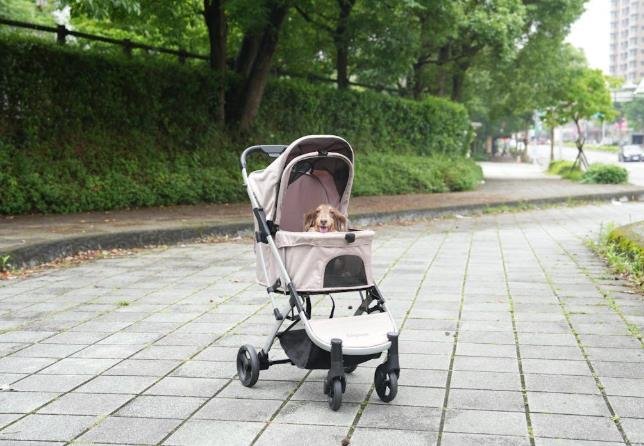Many pet owners want to spend more time with their animals, but the logistics of taking them out during a busy day can feel overwhelming.
But the truth is that not every pet is ready for a full day of running from one place to another. Some get anxious. Some get too excited. Others just get bored. If you’ve ever tried juggling a shopping bag in one hand and a leash in the other, you know how tricky it can be.
The good news? With a few simple changes, you can make these outings smoother—and even enjoyable—for both of you. This article shares practical tips to help your furry friend tag along without stress.
1. Pick Spots That Welcome Pets
You can’t take your pet everywhere, so you need to be smart about where you go. Some stores allow pets inside, especially local shops, garden centers, and many national hardware chains. Cafés with outdoor seating often welcome animals too. Before heading out, check online or call ahead to make sure pets are allowed. If your pet is new to outings, start with quiet places first. Avoid busy hours to reduce noise and crowds, which can be overwhelming for many pets.
Look for parks or pet-friendly shopping areas where they can stretch their legs or explore safely. If your errand list includes a pet store, that’s a perfect stop—they’ll enjoy the smells, treats, and maybe even meeting other pets.
2. Pack Smart for Smooth Trips
The right supplies make errands easier for both of you. Bring water, treats, poop bags, and a towel or mat your pet can sit on. If you’re walking a lot or heading to multiple stops, using a pet stroller can help them stay safe, cool, and relaxed. It also gives you better control in crowded or busy spaces.
Think about storage, too. Some strollers come with cup holders and baskets where you can keep your things organized. Whether you’re heading to the park or doing a quick store run, having everything on hand helps avoid last-minute stress.
3. Start Small to Build Confidence
Your first few errands with your pet shouldn’t last all day. Begin with short and simple outings—maybe just one stop or a quick walk to a store with outdoor access. Watch how your pet reacts. If they seem nervous or overstimulated, it’s okay to call it a day.
Over time, as they get used to the noise, new smells, and activity, you can gradually increase the length of your trips. Keep in mind that what’s fun for one pet might not be fun for another. Go at their pace and don’t rush the process.
4. Avoid Temperature Troubles
Weather can make or break the outing. On hot days, sidewalks can burn paws, and even short car rides can be dangerous. Cold weather can also be uncomfortable, especially for smaller pets. Always check the weather forecast and dress your pet accordingly if needed.
Try to schedule errands during cooler parts of the day, like early morning or late afternoon. Bring water with you and look for shady areas during outdoor stops. Never leave your pet in a parked car, even for a few minutes. It takes only a short time for temperatures to rise to dangerous levels.
5. Teach Your Pet Simple Commands That Work in Public
Before bringing your pet into new environments, it helps if they know a few basic commands. Simple cues like “sit,” “stay,” and “leave it” can prevent problems during errands. These commands help you guide your pet when they get excited or curious.
Practice these at home first. Use treats and short training sessions to help them understand. Once they respond well indoors, try the commands in your yard or on walks. Gradually introduce more distractions so they can focus even when things get busy. This gives you more control and keeps your pet safe when you’re out and about.
6. Use Rewards to Encourage Good Behavior
Treats can be a great way to keep your pet engaged during outings. Bring a few small ones in a pouch or bag so you can reward them throughout the trip. Use treats to reinforce calm behavior, waiting quietly, or following your commands in new situations.
Don’t wait until they misbehave to step in. Instead, reward them when they’re doing something right. This builds a positive association with the places you visit and helps your pet enjoy the experience more. If your pet isn’t food-motivated, praise and petting can work just as well.
7. Plan for Short Breaks Along the Way
Even if you’re only out for a couple of hours, breaks matter. Your pet needs time to walk, stretch, sniff, and relax. Look for grassy areas, open sidewalks, or quiet corners where you can stop for a few minutes.
Breaks help your pet reset between stops. It gives them a chance to take in their surroundings without being rushed. For older pets or those with less energy, breaks also help prevent fatigue. Keep water on hand so they stay hydrated, especially in warmer weather.
8. Pay Attention to Their Body Language
Some pets enjoy being out. Others feel overwhelmed. It’s important to watch for signs that your pet is done for the day. Yawning, licking their lips, shaking, or tucking their tail can all signal stress. Excessive barking or pulling on the leash can mean they’re overstimulated.
If you notice these signs, cut the trip short. Go home, let them rest, and try again another day. Over time, they’ll learn that outings are safe and don’t last forever. This helps build trust and confidence for future trips.
Errands may not sound exciting, but with a little planning, they can be a fun way to spend time with your pet. From choosing the right stops to using training and treats, you can turn basic routines into shared moments. Gear like a pet stroller adds comfort and convenience when you need it most.
Including your pet in your day doesn’t have to be hard. What matters most is making sure they feel safe and included. Start slow, stay patient, and focus on what works for both of you. With the right approach, even a trip to the store can turn into a small adventure you both enjoy.



